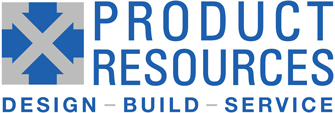The routing process in manufacturing describes the step-by-step production flow that the manufacturing must follow to build the product correctly.
A Bill of Material (BOM) is a fundamental part of the Product Design and the Manufacturing Process Design. The BOM is the key document which links the drawings, material, procedures and reports together.
For each sub-assembly, the BOM details the components and quantity that make up the assembly, including adhesives and other consumables that are used for the assembly.
In addition, the BOM should also include documents used to define the assembly process. These would include Assembly Drawings, Assembly Procedures, Test Procedures, and other instructions. These drawings would be issued to the job to build the assembly on a Lot basis rather than on a per unit basis.
The BOM would also include any Assembly or Test Report templates that are filled out during the manufacturing process. These are routinely electronic in many manufacturing operations, including Product Resources’, and must appear on the BOM to identify the documents that must be completed.
To summarize, the BOM for an Assembly would have entries for:
- Item – unique alphanumeric key to identify an item, whether a component or a document.
- Description – text description of the item
- Quantity – number or amount of the item on the assembly
- Unit of Measure – for the quantity of the item
- Per Lot or Per Unit – per lot means multiply the quantity needed by 1. Per unit means multiply the Quantity needed by the number of assemblies built.
- Bubble / Reference Designator – a number or code used to link a specific Item to a place on the assembly drawing graphic.
- Optionally, you may include the Manufacturer and Manufacturer Part Number, although that information is usually kept with the Item records.
- Notes – Any clerical or clarifying words to helps describe a part within an assembly to supplement a work instruction
Product Resources takes the concept of the BOM a step further and utilizes a Routing instead of a Bill of Material for control of the Manufacturing Process. A Routing has the same information as the BOM, but also includes Operations which can reference different workstations, personnel, and process control points for in-process testing. The Routing allows more flexibility in the scheduling of material as some material may not be needed until much later in the build process and that material can be scheduled into a later operation.
The Routing is also well suited for handling Manufacturing Cells.
The Routing for an Assembly includes the same information as the BOM, but adds:
- Operation Number – an identifier which orders the operations and gives the assembly a chronological flow
- Operation Work Center – a description of the place where the operation is performed. The work center is its own designed space specific for the operation to be performed.
- Information about the Operation Cycle time, Yield, Resources, etc.
